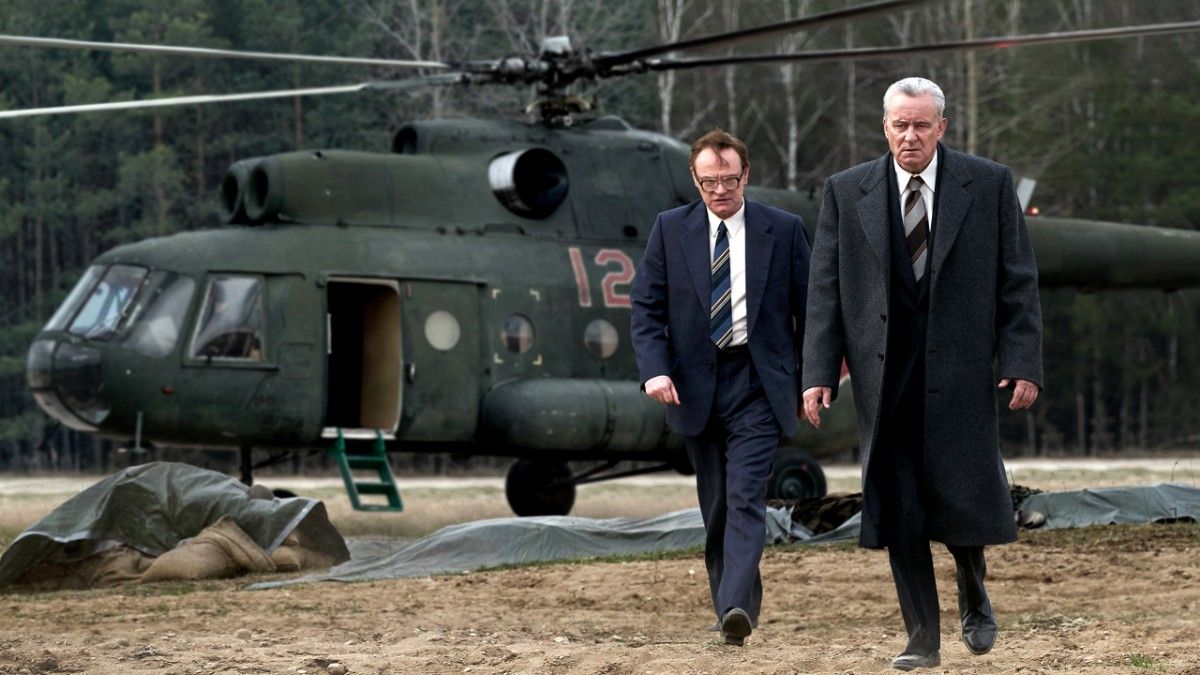Revisiting Chernobyl: Stellar 2019 HBO miniseries recounts 1986 nuclear disaster in the former Soviet Union

At 1:23 a.m. on April 26, 1986, an engineer at the Chernobyl Nuclear Power Plant pressed a button, and an explosion that should have been physically impossible sent shockwaves throughout the surrounding cities. Today, 35 years later, the ramifications are still being felt.
HBO’s “Chernobyl,” based on the true story of what would come to be known as one of the most catastrophic nuclear events in history, revisits, in this 2019 miniseries, the explosion through the eyes of the scientists and party officials tasked with cleanup and containment.
Deputy Chairman Boris Shcherbina (Stellan Skarsgard) summons Valery Legasov (Jared Harris), deputy director of the Kurchatov Institute in Moscow, Russia, to offer expertise at a meeting of the Council of Ministers. Sitting in the anteroom, waiting to be shown in, Legasov begins reading over Shcherbina’s report.
Legasov is assured that the situation is under control – “not great, not terrible.” Everything seems in order until the file mentions large chunks of “black mineral” littering the ground surrounding the blast. His blood runs cold.
Meanwhile, Ulana Khomyuk (Emily Watson), a nuclear physicist, begins her own investigation after picking up unusually high levels of a particular radioactive isotope in Minsk nearly 500 miles from Chernobyl.
Unlike Legasov and Shcherbina, the character of Khomyuk was created to memorialize the scores of scientists who worked together to study and account for the accident.
From Hildur Gudnadottir’s eerie score to the corruption and stomach-turning radiation burns, there is a lot of darkness in this show. But it’s the bright parts that stick out.
Despite the contempt with which authority figures on every level seem to regard their subordinates, the resilience of the Soviet working people and their willingness to sacrifice themselves for the greater good shines through again and again.
It’s clear from the beginning that the job these men and women were given was going to be difficult. But the system within which they were forced to work made it immeasurably more so.
From the first episode, writer Craig Mazin and director Johan Renck illustrate how information in the Soviet Union was shared on a rigorously “need-to-know” basis. But even when information started to spread, most people were so terrified of drawing attention to themselves that they wasted all of the time they could’ve spent solving the problem on shifting blame.
“Yes, people are following you. People are following those people,” First Deputy Chairman of the KGB Charkov tells Legasov at one point. “And you see them? They follow me. The KGB is a circle of accountability. Nothing more.”
Two years after the explosion, Legasov sits alone in his apartment in front of a tape recorder. “What is the cost of lies?” he says. “It’s not that we’ll mistake them for the truth.
“The real danger is that if we hear enough lies, then we no longer recognize the truth at all. What can we do then? What else is left but to abandon even the hope of truth and content ourselves instead … with stories.”
He explains that be it stemmed from willful ignorance, panicked self-preservation or a concerted effort to present a carefully curated facade of strength to the world at large, the lies at the heart of catastrophe would live on.
Khomyuk, Legasov and Shcherbina do everything in their power to minimize the damage, but even with all their success, they fear history could be allowed to repeat itself.
“I’ve given you everything I know,” Legasov says, finishing his recording. “They’ll try to deny it, the way they always do. Will you prevail? I do not know. I only know you’ll do your best to try.”
“Chernobyl” is available on HBO Max.